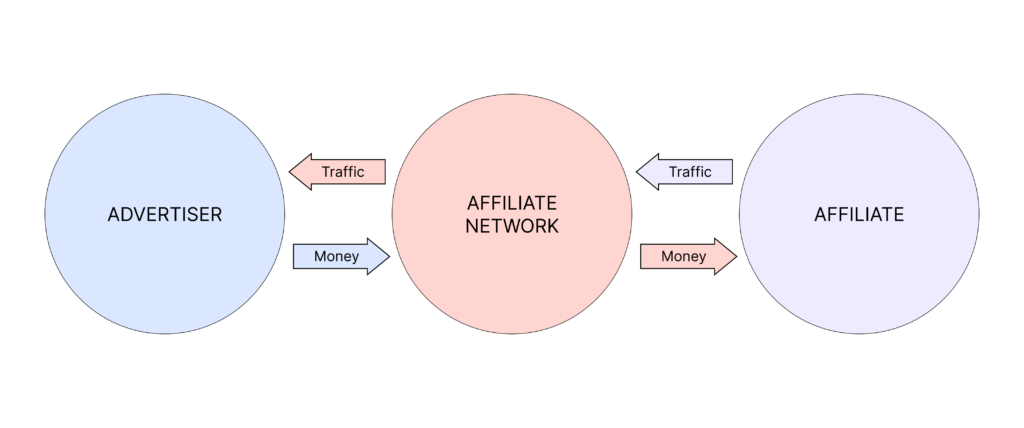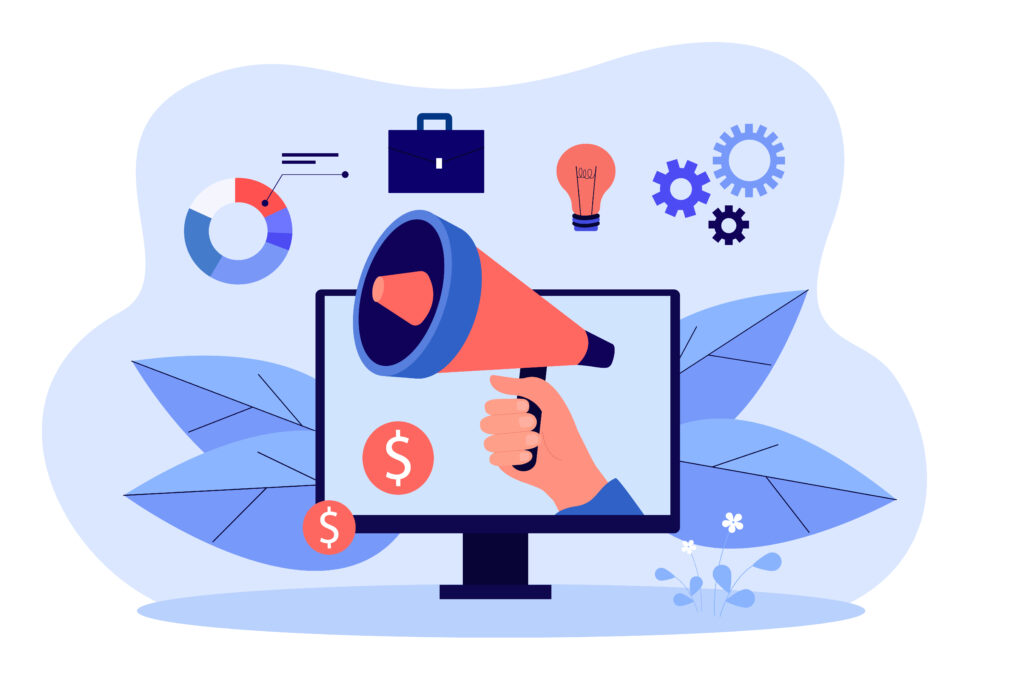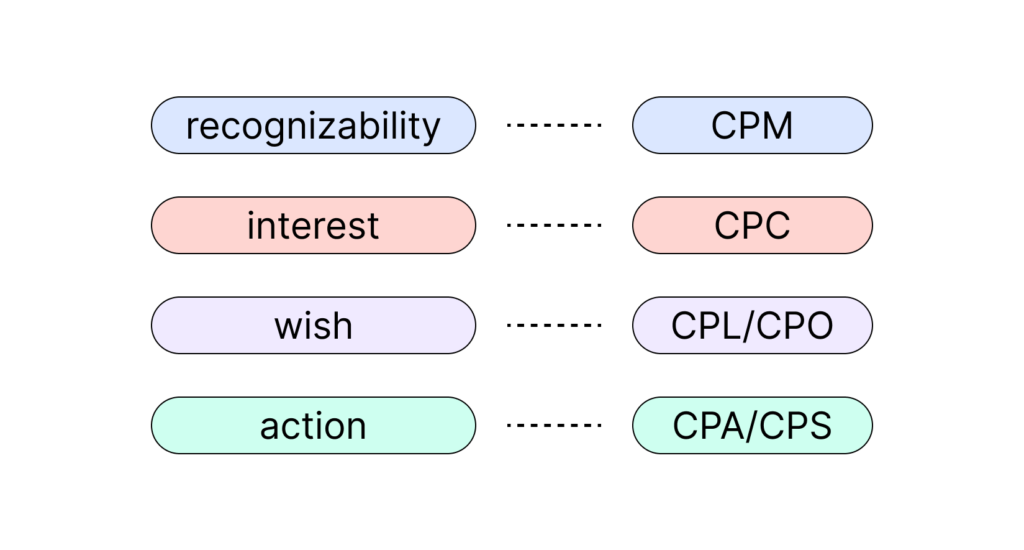An affiliate program is a collaboration between a merchant and affiliates who promote and sell the merchant’s products or services, receiving a commission in return. Here, a merchant is someone who offers a product or service and is willing to pay to promote it.
An arbitrageur, webmaster, or affiliate is an intermediary who uses their channels to sell the merchant’s goods or services, earning a commission.
It is important to understand that an affiliate program and an affiliate network are different things, although they are often confused. Affiliate networks are aggregators of offers that act as intermediaries between webmasters and sellers. They monitor activity, manage payments, and help webmasters with link building. Most of these networks offer tech support and tools to track traffic and analyze results.

Principles of work of the affiliate program
The affiliate program is open to sellers and resellers.
If you are a seller:
- You post your offer (products, services, courses, etc.).
- You create a special link to track clicks to your offer and set conditions for affiliates, including the amount of remuneration and prohibited sources of traffic.
- You can cooperate with affiliate platforms, where after your offer is approved, it becomes available for intermediaries.
If you are a reseller:
- You choose an offer from a seller and study the terms and conditions.
- If the terms suit you, you start promoting the product through your channels.
A vivid example of an affiliate network is Amazon. Here anyone can register, get a unique link to Amazon products, and earn a commission for each purchase made through this link.
What is an affiliate link, and how does a seller understand exactly which webmaster a buyer came from
When a web advertising specialist selects a product to promote, they are provided with a unique advertising link. Each specialist has an individual one, but they all lead to the same advertiser’s product.
What is prelending
To convince a potential customer to buy, say, a subscription to a self-development course, it is not enough to simply place a banner advertisement. It is important to talk about the course in detail and explain what problems it helps to solve. Banner ads are too small for that amount of information. This is where prelandings, or transit pages, also called “pads,” come to the rescue. These are special pages through which the user passes before reaching the advertiser’s main site.

Prelending helps to increase the effectiveness of the landing page, as it provides more information about the product and better attracts the attention of potential customers. By navigating to the prelanding, the customer finds additional information about the product and sees the advertising link there as well. It is possible to create a prelanding from scratch yourself, although some offers already include ready-made transit pages.
How the affiliate program works by example
Let’s say there is a new dating site that needs to be popularized. However, the company is unable to do it on its own due to a lack of resources or qualified employees. In this case, the company turns to an affiliate program for help:
The company offers its offer (an offer) within this program. It announces that it will pay 0.1 dollars for each new user who registers on a dating site.
The webmaster, having studied the offer, decides to invest 100 dollars in advertising, choosing banner advertising as a source of traffic.
After 10 days, the webmaster discontinues the advertising campaign, having spent all 100 dollars. As a result, 500 new users came to the dating site.
The webmaster’s income is $50 ($0.1 per user). Thus, he leaves at a loss after spending $100 on advertising and earning only $50.
It is important to note that the webmaster spends his own money on advertising. If the advertising campaign does not pay off, no one will compensate him for his losses.
The peculiarity of affiliate programs is the difference in what client actions the seller pays the webmaster for.
CPA (cost-per-action): A payment model for a specific action performed. It is prescribed in advance by the advertiser. The target action can be filling out a questionnaire, registering on a website, and entering contact information such as a phone number or email.
CPS (cost-per-sale): Pay-per-sale model. In this case, the intermediary receives a commission only if the customer makes a purchase. For example, Amazon’s affiliate program works on this model.
CPC (cost-per-click): Here the advertiser pays for each unique click to the site. This type of affiliate program was popular when digital marketing was just starting to develop, now CPC is used much less often.
CPV (cost-per-view): A model in which a webmaster is rewarded for each view of an advertiser’s video.
CPI (cost-per-install): A payment model in which an intermediary receives a fee if a customer installs an application.

Are affiliate programs and referral programs the same thing?
The answer is no. A referral program is a tactic by which current customers of your services recommend them to other potential customers.
Most affiliate programs and networks use this technique. They incentivize their affiliates to not only offer the company’s products, but also the affiliate programs themselves. This means that every affiliate who attracts a new affiliate to the company gets rewarded for it. In each company, the form and amount of remuneration are set individually. A special referral link containing a unique identifier helps to recognize which partner has brought in a new member.
How much you can earn from an affiliate program and what it depends on
Income from affiliate marketing can vary greatly. For example, an affiliate may earn $1,000 one month and only $100 the next.
A webmaster’s earnings depend on many factors:
Terms of the merchant: Some merchants offer high commissions to their affiliates, while others prefer a flat small fee.
Relevance of the offer: For example, selling digital cameras may not be as lucrative due to the lack of popularity of the product.
Price and quality of the product: If the product is expensive but has no clear benefits, it will be difficult for affiliates to make a profit, especially when working on a CPS (pay-per-sale) model.
Quality and volume of traffic: Conversion rates are key here.
Sales funnel: By understanding the customer’s decision-making process, you can more effectively stimulate their interest in the product.
Targeting skills: For example, trying to sell a drill to a teenager is likely to fail. You can learn more about targeting from articles and books on the topic.
Testing: You don’t want to run the same ad campaign everywhere. It is important to test different ads with different information and visual content and to place ads in different places. For example, targeted ads on Facebook may be more effective than contextual ads on Google.

How to choose an affiliate program
A member of the affiliate program can register and select an offer from the list. It is also possible to search for programs independently. Often sellers indicate the option “Distribute affiliate link” on their pages. By clicking on it, the participant receives a tracking link and can start the partnership. Regardless of the method chosen, it is important to consider several aspects:
Product relevancy
You may have seen ads for unique products such as a knife card or long-lasting foundation. These were popular offers with high conversion rates. However, relevancy doesn’t always mean trendy; it’s more important that the product solves people’s problems.
Sales page
This is the first thing a potential customer sees. It is important to evaluate it from the buyer’s perspective: informative, functionality, mobile optimization, etc.
Reputation of the seller
Well-known brands are more trusted by buyers, which increases the chances of a sale.
Terms of partnership
These include the sources of traffic, the size and regularity of commission payments, and the accounting of affiliate tags.
It is recommended that beginners start with sectors that operate on the CPA (pay-per-action) model. Examples of such sectors: are dating and gambling. It is easier to gain experience here, as the goal is not to buy, but to perform a targeted action without the risk of losing money.
In conclusion:
An affiliate program is a cooperation between a seller and an intermediary, where the latter promotes a product and receives a commission.
There are three parties involved in an affiliate program:
- Advertiser (owns the product).
- Affiliate (promotes the product).
- Customer.


